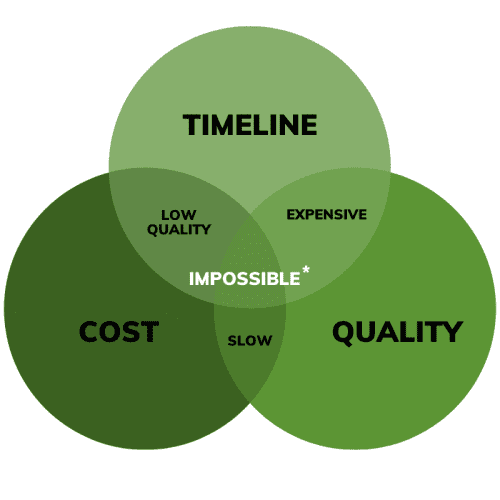So, you’ve been tasked with migrating 10,000 pages of content featuring new corporate branding from your existing HTML site to a new installation of Sitecore. Before you get started, there are two big questions you have to answer:
-
- Who is the best fit to take on the content migration?
- How can you get it done in a way that is timely, of high quality and cost effective?
While you might be thinking of having your Sitecore developers tackle the challenge, or hiring a temp agency to take on the content migration, we have another suggestion that might be just what you need: software testers.
Why software testers?
Software testing is a unique skillset that serves as a second set of eyes to any development process. A software tester’s skills have been honed by working on a wide range of software, developed across industries, to ensure that it meets specific requirements.
They’re experts in identifying even the smallest defects that could impact a user’s experience with a software product or service. To do this, software testers need to be capable of seeing a wide range of problems – especially those that may be missed by developers during the development cycle.
This includes anything from catching defects in the alignment of a piece of text, the colour of a logo, spelling errors – and the list goes on. The ability to understand quality requirements, and what quality looks like, is a skill developed over time; one that increases the efficiency and quality of a content migrator.
Your Sitecore development team is great for taking your site vision and making it a reality, but when it comes to the process of content migration, it is important to consider the primary roles of developers and software testers.
A software tester is constantly working to ensure that software is meeting detailed qualifications, and putting themselves in the shoes of the end user to make certain you are delivering the highest quality software. Doesn’t that sound like the kind of person you want migrating, checking and double checking the content for your new website?
So, I don’t need testers anymore. Right?
So, you’ve decided to rely on a team of software testers to act as your content migrators. Do you really need to have someone test everything too? The short answer is yes.
Think about it like this: the earlier you bring software testers into the mix, the better. Using software testers to help migrate content is really about putting individuals focused on quality in earlier, and throughout, the process of your content migration.
Having a content migration team that is built with software testers does not negate the need for software testing. What it does do is reduce the number of defects, and the amount of time spent on defects that are found.
While the content migration team is well equipped to find and fix problems before reaching the testing phase, you still need a final check to validate that the content has been migrated properly and that your website is ready to be deployed.
Cost, timeline and quality: Can you ever have all three?
On a content migration project, there are three primary constraints that need to be taken into consideration when you are planning: cost, timeline, quality. Historically, you can adjust any two of these constraints, but by doing so, you will need to sacrifice the third. By working with software testers on your content migration, we argue that you can adjust all three.
We’ve talked about how quality can be increased by using software testers earlier in the process to migrate content, but with fewer content deficiencies getting to the testing team reviewing your content, your timeline for the migration can be reduced. The reduction in time will also reduce the costs of your project.

*But more likely if you use software testers as your content migrators
But wait, there is more!
Content migration is a repetitive and manual task; however, with the help of software testers there is an opportunity to introduce automation into the mix. It may be possible to migrate some data from an existing data source to the new content management system, but as technology has improved, there are now other options that can save time and money, including Robotic Process Automation.
According to McKinsey, Robotic Process Automation (RPA) “is a type of software that mimics the activity of a human being in carrying out a task within a process. It can do repetitive stuff more quickly, accurately, and tirelessly than humans, freeing them to do other tasks requiring human strengths”. RPA
tools are becoming more sophisticated, and with the help of the software testers working on your content migration, you may be able to rely on it for parts of your content migration process in order to reduce some of the repetitive and repeatable workload going to the content migration team.
While RPA is a relatively new concept, software testers have been using test automation tools for decades to improve efficiencies in their work. RPA uses a similar skillset as that of software testing and is a perfect fit for software testing professionals who understand the capabilities of the different tools, and where to best use them.
If you have a content migration project that you’re about to take on, reach out to us today. We have a team of experts to help you plan your project, and to explore how building your content migration team with software testers can deliver your project in a way that is faster, smarter, and more cost efficient.

